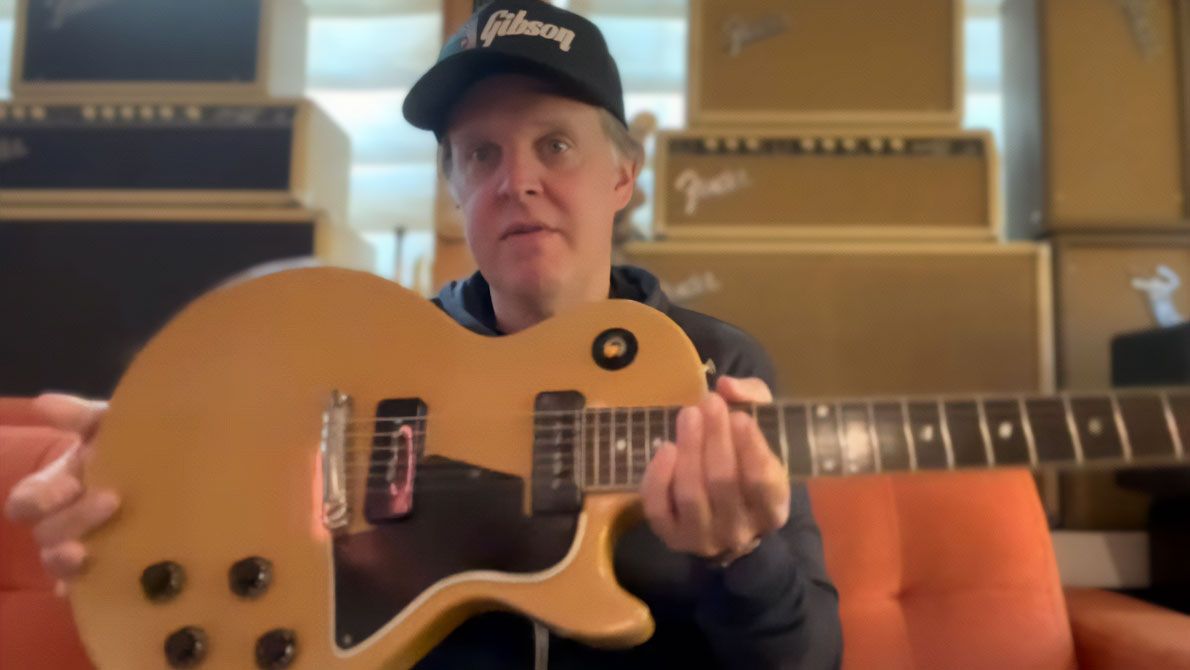
JOE BONAMASSA ON WHY HE LOVES THE P-90S ON HIS 1958 GIBSON LES PAUL SPECIAL – AND THE ORIGINS OF ITS ‘TV YELLOW’ FINISH
I’d like to talk about one of my favorite guitar designs, the Les Paul Special. The one I’m sporting for this column happens to be a 1958 model in “TV yellow”; this lime/tan-type color was used so that you could see the guitar on black-and-white television screens back in the 1950s, thus the color naming.
The original models were painted white, but they soon discovered that, on B/W TV, the guitar body would miraculously vanish; all you could see was the fretboard, pickups and pickguard. Darkening the body to this unusual color solved the problem, and part of the iconic stature of the instrument was born.
This guitar is fitted with P-90 pickups, which are simply large single-coil pickups. I love the sound of P-90s and have used a variety of instruments fitted with them over the years.
These days, I’m more of a humbucker player onstage, but I like P-90s because they roar while also driving up the “middle” of any band, especially when playing in a large ensemble. The only downside is that, as giant single coils, they can be noisy and can generate a lot of hum, so you have to walk around and try to find a quiet spot!
Figure 1 showcases the sound of the guitar set on the bridge pickup. This example begins with a lick based on the A major pentatonic scale (A, B, C#, E, F#), but the licks that follow are based on the A blues scale (A, C, D, Eb, E, G).
Notice how, in bar 2, I start a phrase in 5th position, but at the end of bar 3 through the beginning of bar 6 I’ve shifted down to 3rd position to exploit this guitar’s great low-end honk.
P-90s provide a very clear sound, even when using distortion. The bass notes are nice and fat, and while these are single-coil pickups, they have a high output. You’ll find that the tone cleans up nicely when you roll back the guitar's volume control, and the sound is very chime-y and perfect for rock-style rhythm playing, as demonstrated in Figure 2.
This is precisely why the Who’s Pete Townshend often played SG Specials outfitted with P-90s, his sound on the album Live at Leeds being a prime example.
Some will complain, “The intonation is not great on those wrap-around tailpieces,” and it’s not! There are two solutions: 1) ignore it and avoid playing barre chords past the 12th fret; or 2) call Joe Glaser and he’ll make you a compensated tailpiece that will effectively resolve the issue.
The body is simply a mahogany slab, like on a Les Paul Standard but without the carved maple top, or “cap”. This yields a warm, fat sound.
Figure 3 offers an example of the neck pickup: these 12th-position licks are based on the E blues scale (E, G, A, Bb, B, D). And the middle position produces an “instant Mike Bloomfield” sound.
Gibson has been making great reissues of these guitars for years that are reasonably priced. Highly recommended!
2024-06-13T14:04:53Z dg43tfdfdgfd